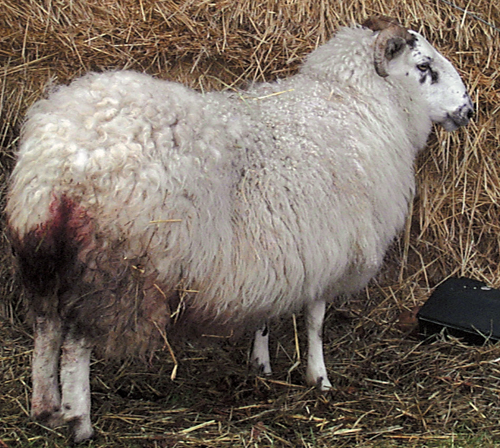Difference between revisions of "Sheep Medicine Q&A 11"
Ggaitskell (talk | contribs) (Created page with "{{Template:Manson}} centre|500px <br /> '''A two-crop ewe from a group of 155 pastured sheep due to start lambing in 3 weeks has aborted two fr...") |
m |
||
| Line 1: | Line 1: | ||
| − | {{Template:Manson}} | + | {{Template:Manson Scott Sheep}} |
[[Image:Sheep Medicine 11.jpg|centre|500px]] | [[Image:Sheep Medicine 11.jpg|centre|500px]] | ||
Revision as of 14:26, 23 May 2011
| This question was provided by Manson Publishing as part of the OVAL Project. See more Sheep questions |
A two-crop ewe from a group of 155 pastured sheep due to start lambing in 3 weeks has aborted two fresh fetuses. Three other abortions have occurred over the previous 5 days. The ewe is bright and alert but there is a red–brown vulval discharge over the wool of the tail and perineum. The rectal temperature is 40.0°C (104.0°F). The udder is reasonably well developed and there is some accumulated colostrum.
| Question | Answer | Article | |
| What samples would you collect? | A vaginal swab, fetuses, and placentae should be submitted for laboratory examination. |
[[|Link to Article]] | |
| List the common causes of abortion. | Common abortifacient agents include:
C. psittaci was demonstrated in direct smears from the placentae and a strong positive titre obtained in three of four blood samples; a very high titre for toxoplasma was recorded for the other ewe. |
[[|Link to Article]] | |
| What treatments would you consider? | The ewe was treated with intravenous oxytetracycline and made a rapid recovery. The ewe accepted a small male triplet foster lamb. All ewes in the group were injected with 20 mg/kg long-acting oxytetracycline intramuscularly that same day to reduce further abortions. |
[[|Link to Article]] | |
| What control measures could be adopted? |
|
[[|Link to Article]] | |
